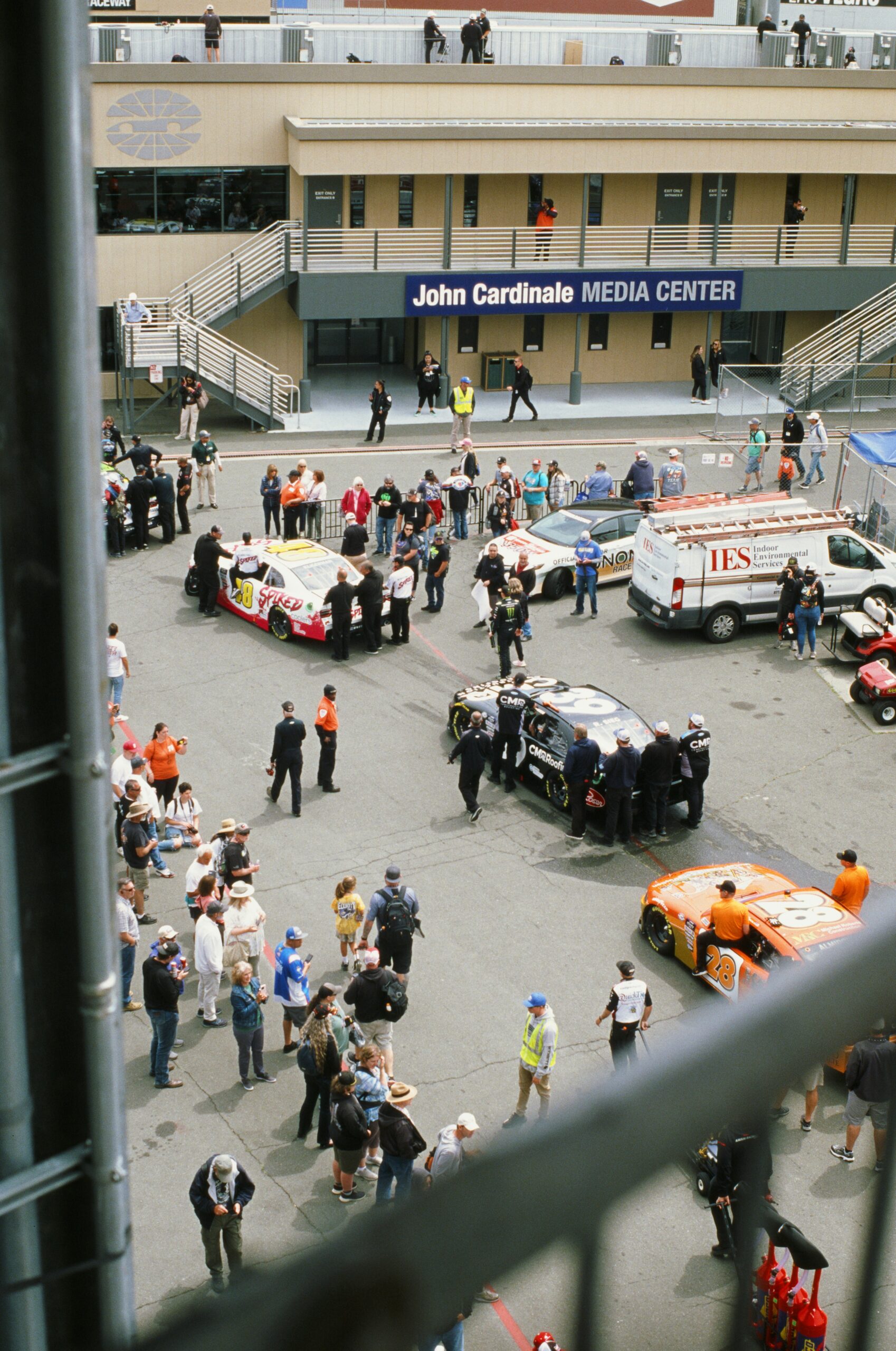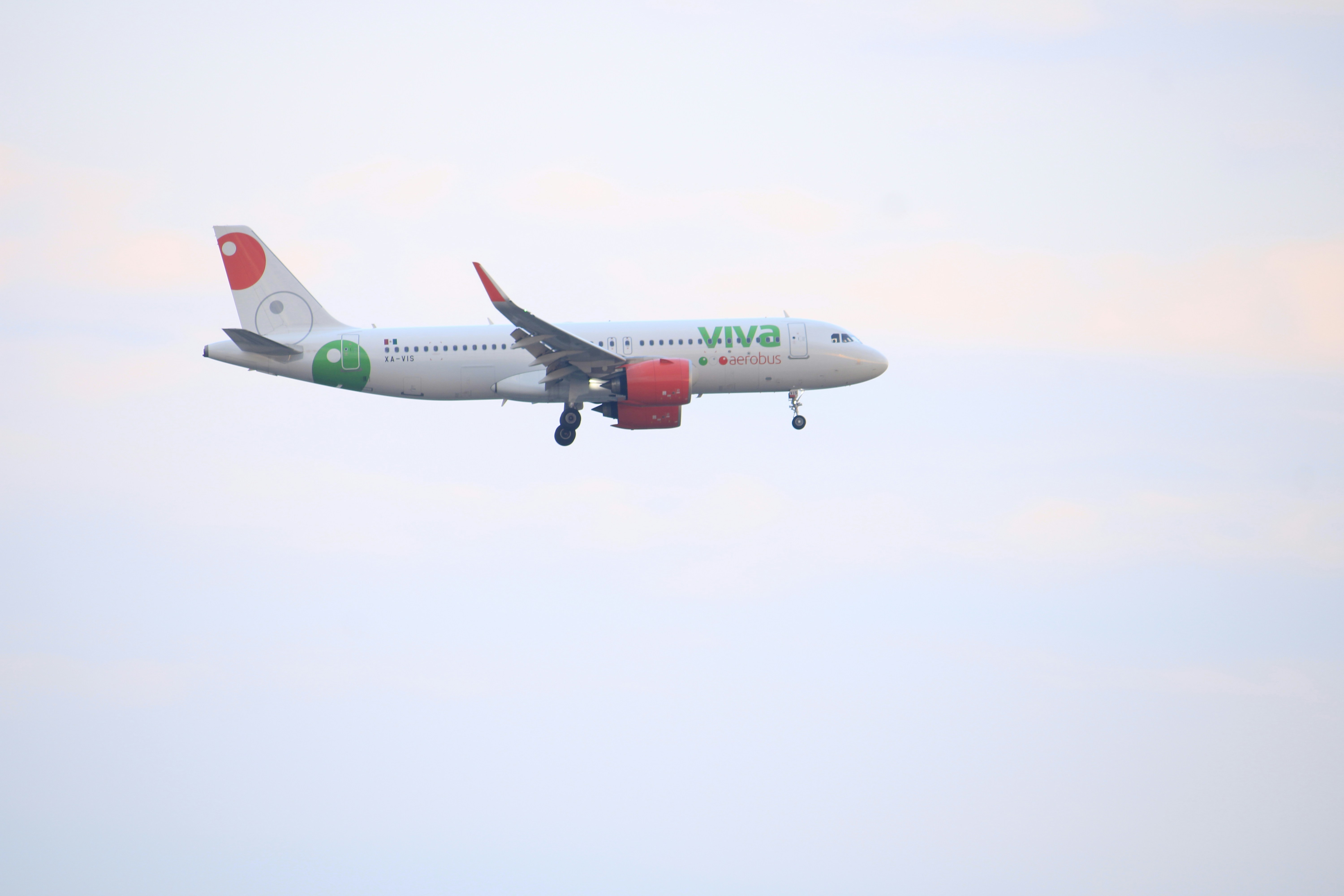The Rainy History of the Daytona 500: Bill France Weather and Its Impact

Photo by Caleb Woods on Unsplash
Introduction to Daytona 500 Rain Delays
The Daytona 500, often heralded as “The Great American Race,” serves as the pinnacle event of the NASCAR season. Held annually at the Daytona International Speedway in Florida, this race not only marks the start of the NASCAR Cup Series but also showcases a rich history that stretches back to its inception in 1959. Each year, fans flock to this iconic venue, captivated by the thrill of high-speed racing and the chance to witness history in the making. However, one unpredictable factor that has consistently influenced the Daytona 500 is the weather.
Daytona weather is known for its variability, particularly during the early months of the year when the race is traditionally held. This unpredictability has often led to rain delays, which can significantly impact the schedule and the flow of the race. Inclement weather, such as sudden showers or thunderstorms, has the potential to halt the race for extended periods, leading to both disappointment and frustration among participants and spectators alike. The phenomenon of rain delays is a longstanding aspect of the Daytona 500, and it has left an indelible mark on the event’s history.
The influence of weather extends beyond just delays; it can alter race strategy, driver performance, and even fan engagement. Over the years, there have been multiple occurrences where rain has played a pivotal role, affecting the race’s outcome or necessitating rescheduling. As we delve deeper into the chronicles of the Daytona 500, it becomes apparent that understanding the relation between racing and Daytona weather is crucial to fully grasping the complexities of this beloved event.
The 1965 Daytona 500: A Turning Point in Weather Delays
In the annals of the Daytona 500, the 1965 race stands out as a significant event, not just for its intense competition but also for the unpredictable Daytona weather that played a pivotal role in its outcome. Initially scheduled for a full 200-lap format, this iconic race experienced considerable interruptions due to rain, resulting in a significant reduction to only 133 laps, a turning point that would shape the way weather was managed in future races.
The drivers faced unique challenges as the clouds rolled in over Daytona International Speedway, creating an atmosphere fraught with uncertainty. Among these competitors was Fred Lorenzen, who would ultimately emerge as the victor. Lorenzen and his fellow drivers had to navigate both the physical demands of racing and the psychological stress of racing under seemingly adverse weather conditions. The incessant drizzle that characterized the latter part of the race added a complex layer to an already demanding competition. Drivers had to adjust their techniques, adapting to slick surfaces and compromised visibility, which were ultimately influenced by the severe Daytona weather.
Race management took the unprecedented decision to shorten the race with safety as the primary concern. The situation prompted discussions about the role of weather in racing, leading to revised policies surrounding inclement weather at future events. While Lorenzen celebrated in victory lane, holding the coveted trophy amidst the ongoing rain, the event served as a stark reminder of how significantly weather could influence racing outcomes. This race not only highlighted the unpredictability of Daytona weather but also marked a crucial evolution in how NASCAR navigated the challenges posed by weather during events. With such experiences, NASCAR learned to prioritize safety while still aiming to preserve the integrity of the competition.
The 1966 Daytona 500: Another Weather Disruption
The 1966 Daytona 500 is etched in the annals of racing history, not only for the fierce competition but also for the significant influence of Daytona weather on the event. On that fateful day, expectations were high as Richard Petty entered the race as a favorite. Petty, a prominent figure in NASCAR, had been showcasing his remarkable skills leading up to the Daytona 500, and many believed he would secure another victory. However, Daytona weather had other plans.
As the race commenced, overcast skies loomed ominously over the Daytona International Speedway, and the threat of rain heightened nerves among drivers and fans alike. The race unfolded with intense competition, but as laps progressed, the weather worsened. Just two laps before the scheduled finish, rain began to fall, creating hazardous conditions on the track. The race officials, prioritizing the safety of drivers and spectators, made the difficult decision to call off the event prematurely. This marked yet another instance in the Daytona 500’s history where weather significantly altered the anticipated outcome.
The impact of the weather on this race extended beyond just the final standings; it served as a stark reminder of nature’s unpredictability in motorsport. Drivers had trained rigorously, and teams had invested considerable resources in preparation, only to have their efforts undermined by rain-soaked conditions. Richard Petty, like so many others, left the event feeling the disappointment that often accompanies racing in Daytona’s variable climate.
In retrospect, the 1966 Daytona 500 exemplified how critical Daytona weather can be in shaping race results. Fans, racers, and organizers learned a valuable lesson that day—despite the speed and skill involved in the sport, the elements can dramatically alter any race, leaving an indelible mark on its history. This incident remains a poignant chapter in the ongoing saga of the Daytona 500, illustrating the intricate relationship between racing and the forces of nature.
The Long Hiatus: 37 Years Without Rain Interference
The Daytona 500, one of the cornerstone events in NASCAR, experienced a remarkable 37-year span from 1962 to 1998 during which rain did not interfere with the race. This period stands out not only for the consistent race conditions but also for the evolution of both the sport and the track during these years. The absence of Daytona weather disruptions allowed NASCAR to develop a well-organized framework around race day operations, ensuring that fans and drivers alike could depend on consistently favorable conditions.
During this lengthy hiatus from rain-related delays, the Daytona International Speedway underwent significant enhancements. Upgrades to the track surfaced with improved drainage systems and repaving efforts that contributed to superior water management. These developments meant that even in the event of inclement weather, the track had the capability to dry more quickly, reducing the likelihood of postponements. As NASCAR embraced these innovations, the sport also expanded its fan base, appealing to new audiences who enjoyed the thrill of the race without the unpredictability often brought on by poor weather.
This era of uninterrupted racing became a defining time for stock car racing. The popularity of the Daytona 500 soared, showcasing top drivers and thrilling fans with exciting finishes. Through this period, many of the legendary racers emerged, establishing a torrid rivalry and further embedding the race into the fabric of American motorsport culture. While NASCAR faced various challenges over the years, the consistent and favorable Daytona weather during this span allowed the race to maintain high levels of interest and attendance, solidifying the Daytona 500’s reputation as one of the premier events on the racing calendar.
The Legacy of Bill France Weather
The term ‘Bill France Weather’ originates from the legacy of both Bill France Sr. and Bill France Jr., pivotal figures in the establishment and growth of NASCAR as we know it today. Bill France Sr. founded the National Association for Stock Car Auto Racing in 1948, laying the groundwork for what would become the Daytona 500, one of the most prestigious races in the world. As the founder of Daytona International Speedway, his influence extended beyond the organizational aspects of the race; he also emphasized the importance of race day conditions, which encompassed various weather-related factors.
Weather played a crucial role in the early years of NASCAR, mainly due to the unpredictability associated with outdoor racing. Bill France Sr. prioritized establishing an optimal race day environment, introducing various innovations such as track drainage systems and ensuring the facility’s infrastructure could withstand diverse weather conditions. This foresight was instrumental in successfully hosting races, regardless of the challenges posed by Daytona weather.
Bill France Jr. continued the legacy of his father and further cemented ‘Bill France Weather’ as a significant concept related to NASCAR. Under his leadership, the focus on safety and track management became paramount, especially concerning inclement weather. France Jr. championed the adoption of comprehensive weather monitoring technologies, which led to quicker decisions and enhanced safety protocols during races. The phrase ‘Bill France Weather’ thus evolved to symbolize not only the historical context of race day conditions but also the proactive measures undertaken by the France family to ensure the integrity of racing events.
Today, ‘Bill France Weather’ encompasses the ongoing commitment by NASCAR to prioritize racing under favorable conditions, showcasing the influence of both leaders on the sport. Their legacy serves as a reminder of the intertwined relationship between racing and the unpredictable nature of Daytona weather, which continues to be a topic of interest for both fans and participants alike.
Memorable Rain Delays in NASCAR History
Throughout NASCAR’s extensive history, rain has intermittently impacted races, leading to significant delays and reshaping the outcomes of various events. One of the most notable instances outside of the Daytona 500 happened at the 1990 Coca-Cola 600, where heavy rain caused an unprecedented delay of nearly six hours. As the rain poured, teams had to keep their cars ready for the possibility of racing again, showcasing the resilience and adaptability of both the drivers and their support crews. This event highlighted how the unpredictable nature of daytona weather and heavy rainfall can disrupt even the most meticulously planned racing schedules.
Another memorable rain delay occurred during the 2007 NASCAR Cup Series at the Richmond International Raceway. As dark clouds loomed overhead, a torrential downpour led to a halt after just over 200 laps of racing. The subsequent delay caused a lengthy suspension of the event, and when racing resumed, the drivers had to adapt to increasingly slick road conditions and reduced visibility. This scenario prompted discussions about the importance of tire choices and driving strategies, emphasizing how external weather conditions can dramatically elevate the stakes of a race.
Moreover, rain at the Charlotte Motor Speedway in 2015 saw a delay that extended over two days, culminating in a historic race finish under the lights. The ability of the NASCAR officials to skillfully manage the conditions and communicate effectively with the teams was pivotal in continuing the event. These memorable delays not only influenced the immediate outcomes of the races but also served as reminders of how daytona weather patterns often loom large in the background of NASCAR history. Increased focus on weather forecasting and technology has since become a fundamental aspect of race planning, ensuring that teams are prepared for any changes that nature may impose.
Athlete Responses to Weather-Related Interruptions
Throughout its storied history, the Daytona 500 has faced countless disruptions due to unpredictable Daytona weather, forcing drivers to adapt their strategies and mentalities during rain delays. Many athletes regard weather-related interruptions as an inherent part of racing, viewing these moments as opportunities to recalibrate and refocus. For instance, veteran driver Dale Earnhardt Jr. has often expressed how crucial it is to maintain a positive outlook when rain clouds loom over the track. He has recounted moments where the switch from racing to waiting transformed his approach. “You have to use the downtime to gather your thoughts. It can be a mental game,” he noted.
Likewise, younger drivers, such as Chase Elliott, have shared their experiences with delays. Elliott remarked that during one particularly rainy Daytona 500, the tension in the pit area was palpable. “We all knew the race could restart at any moment, and staying prepared was essential,” he said. Preparation during these interruptions requires teams to communicate effectively, adjusting not only their strategies but also tire selections. The dynamic environment of racing requires adaptability in the face of changing Daytona weather conditions.
Moreover, former champion Jeff Gordon emphasized the significance of team spirit during rain delays. “We relied on one another to keep our spirits high, regardless of what was happening outside. It’s about overcoming adversity together.” Gordon’s viewpoint illustrates how drivers and crews often form strong bonds during these challenging periods. As delays stretch on, diversions like sharing stories or strategizing together can mitigate the frustration caused by the uncertain wait for the weather to clear.
In essence, while the specter of rain may cast a shadow over the excitement of the Daytona 500, it has also fostered an environment where resilience, teamwork, and adaptability thrive among athletes faced with Mother Nature’s unpredictability.
The Evolution of Technology and Weather Forecasting in NASCAR
Over the years, NASCAR has witnessed significant advancements in technology, particularly in the realm of weather forecasting. These improvements have not only enhanced the accuracy of predicting Daytona weather but have also revolutionized the way race officials plan and manage events. Traditionally, NASCAR relied heavily on simplistic weather reports, which often led to uncertainty regarding race schedules, particularly in locations susceptible to abrupt weather changes, such as Daytona Beach, Florida.
The integration of sophisticated meteorological tools and real-time data analytics has drastically transformed how racing events are approached. Modern radar systems and satellite imagery allow meteorologists to observe real-time conditions and forecast weather patterns with unprecedented precision. This technological evolution has facilitated NASCAR’s ability to make informed decisions concerning race day operations and has, in many respects, alleviated the unpredictability that once plagued events due to unexpected inclement weather.
For instance, through the use of advanced Doppler radar and predictive modeling, race organizers can assess the likelihood of rain or other severe weather phenomena more accurately than ever. This level of prediction enables NASCAR officials to communicate timely updates to teams, drivers, and fans regarding changes to race schedules, thereby minimizing the duration of delays caused by Daytona weather complications.
Moreover, the reliance on mobile technology and applications allows racers and teams to stay updated on the most current weather information during events. Tools such as weather apps and social media provide quick access to live updates, ensuring that participants can adapt their strategies accordingly. This connectivity ensures that the impact of adverse weather conditions is mitigated, enhancing the overall racing experience and safety.
In conclusion, the marriage of technology and weather forecasting in NASCAR has dramatically improved the management of events like the Daytona 500. It has reduced uncertainty and has ensured a more seamless experience for all involved, effectively addressing the historical challenges posed by unpredictable weather patterns.
Conclusion: The Future of the Daytona 500 and Weather Challenges
In examining the historical interplay between Daytona weather and the famed Daytona 500, it becomes increasingly clear that weather patterns will continue to pose significant challenges for racers and organizers alike. With climate change accelerating and influencing typical weather behaviors in many regions, including Daytona Beach, it is crucial for NASCAR to remain vigilant about upcoming meteorological trends that could impact future events.
The Daytona 500 has enjoyed a storied legacy, but as historical weather events have shown, heavy rain and storms can disrupt race schedules, alter fan attendance, and affect team preparations. The racing community must adapt to the reality that inclement weather conditions, such as those frequently observed in Daytona, are likely to occur more often. This may necessitate the implementation of new technologies and strategies to predict and manage race day conditions effectively. For instance, real-time weather tracking and advanced forecasting tools could potentially mitigate risks associated with abrupt weather changes.
Moreover, as the trend of extreme weather continues, the stakeholders of the Daytona 500 will need to address concerns related to fan safety and experience. The implementation of flexible race schedules, along with enhanced communication strategies regarding weather updates, will be vital to ensuring both participants and spectators can enjoy the race despite any disruptions caused by the elements.
As NASCAR moves forward, understanding the linkage between Daytona weather and race outcomes will be essential. By prioritizing adaptive practices and resilient planning, racing authorities can navigate the complexities introduced by changing weather patterns. The interaction between climate and racing traditions will undoubtedly shape the future of the Daytona 500, making it an ever-evolving spectacle that resonates with both the challenges and triumphs posed by nature.




